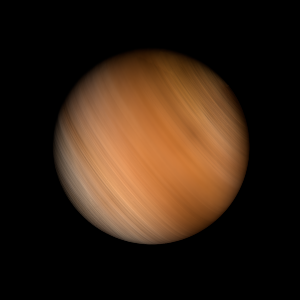|
|
Space Astro
|
Info for exoplanet "Giriothys'tan"
| Scientific (actual) data |
|---|
| Name | TOI-1683 b |
| Planet status | Confirmed |
| Planet mass | 0.025 |
| Radius | 0.232 |
| Orbital period | 3.05753 |
| Semi major axis | 0.036 |
| Inclination | 85.99 |
| Discovered | 2022 |
| Updated | 2024-06-14 |
| Temperature (kelvin) | 927 |
| Publication | Published in a refereed paper |
| Detection type | Primary Transit |
| Mass measurement type | Theoretical |
| Radius measurement type | Primary Transit |
| Star name | TOI-1683 |
| Right ascension | 65.98° |
| Declination | 27.82° |
| Wikipedia article | TOI-1683 b |
Back
| |
| Fictional info (?) |
|---|
| Suggested name | Giriothys'tan |
| Planet type | Small cold gas planet |
|
| Atmosphere | Oxygen | 60% |
| Ammonium hydrosulfide (NH4SH) | 21% |
| Molecular hydrogen | 15% |
| Xenon | 3.4% |
| Hydrogen | 0.056% |
| Atmospheric pressure | 0.0015 bar |
 |
| No known satellites |
| Google search for Giriothys'tan |
|
Website by Joachim Michaelis
|
|
|
|